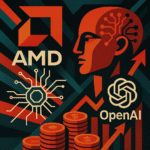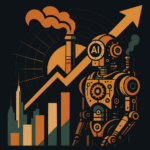Key Points
- China views building a strong education nation as essential for national rejuvenation and technological advancement, aiming to achieve this goal by 2035.
- Significant progress has been made, including building the world’s largest education system, achieving over 60% gross enrollment rate in higher education, and fully achieving basic equilibrium in compulsory education at the county level.
- Key strategies involve strengthening ideological and political education (Sizheng Ke 思政课), enhancing the supporting role of education for science and talent (Kejiao Xingguo Zhanlüe 科教兴国战略), and promoting industry-education integrated vocational education (产教融合的职业教育).
- The focus is on improving educational equity and quality, enhancing public services, embracing digitalization (including AI), and cultivating a high-quality teacher workforce with the Spirit of Educators (Jiaoyujia Jingshen 教育家精神).
- China aims to become an important center for education with international influence by deepening opening up, expanding global cooperation, and participating in global education governance to build a Community of Shared Future for Humanity (Renlei Mingyun Gongtongti 人类命运共同体).

China is doubling down on its mission to build a strong education nation, a critical move for national rejuvenation, and this deep dive offers insights into their ambitious strategy.
An important article by Xi Jinping (Xí Jìnpíng 习近平), General Secretary of the Central Committee of the Communist Party of China (中共中央), President of the People’s Republic of China (国家主席), and Chairman of the Central Military Commission (中央军委主席), titled “Expediting the Building of a Strong Education Nation,” is set to be featured in the 11th issue of Qiushi (《求是》) magazine, published on June 1, 2025.
This isn’t just talk; it’s a strategic imperative.
Why a Strong Education Nation? The Bedrock of China’s Ambitions
Education is framed as the very foundation of building a strong nation and achieving national rejuvenation.
The Communist Party of China has consistently prioritized education_s development.
Since the 18th National Congress of the Communist Party of China (党的十八大), education has been treated as a matter of paramount importance for the country and the Party.
Key initiatives include:
- Comprehensive implementation of the Party’s education policy.
- Deep implementation of the Strategy for Invigorating the Country through Science and Education (科教兴国战略).
- Acceleration of education modernization.
- Establishing the goal of building a strong education nation by 2035.
- Upholding and strengthening the Party’s overall leadership over education.
- Continuously pushing forward educational system and mechanism reforms.
These efforts have driven historic achievements and transformative changes in education in the new era.
Look at the Scoreboard: China’s Educational Milestones
The progress is tangible, impacting students’ all-around development – moral, intellectual, physical, aesthetic, and labor education (Wuyu Bingju 五育并举) – with this concept gaining widespread acceptance.
Ideological and Political Theory Courses (Sizheng Ke 思政课) in schools have been comprehensively strengthened.
Quality-oriented education has made solid strides, nurturing generations of new-era youth.
The public’s sense of educational gain has become more substantial.
Consider these staggering numbers:
- China has built the world’s largest education system.
- Historic leaps have been made in education popularization.
- The gross enrollment rate in higher education now exceeds 60% – a massive pool of advanced talent.
- Basic equilibrium in compulsory education has been fully achieved at the county level.
- Student aid covers all educational stages, benefiting a cumulative 1.4 billion person-times. Talk about scale!
Powering Economic and Social Development
Education’s support for economic and social development is more robust than ever.
The average years of education for the new labor force have reached 14.2 years.
The population with a university education or higher now exceeds 240 million people – this is a game-changing human capital resource for innovation and industry.
Universities are making significant contributions to:
- Talent cultivation.
- Basic research.
- Major scientific and technological breakthroughs.
Vocational education (Zhiye Jiaoyu 职业教育) is a critical pipeline, supplying over 70% of the new frontline workers for modern manufacturing, strategic emerging industries, and modern service industries.
Comprehensive educational reform has deepened.
The education evaluation system is becoming increasingly perfected.
The “Double Reduction” policy (双减) has driven profound changes in the ecosystem of basic education.
An examination and enrollment model centered on categorized examinations, comprehensive evaluation, and diversified admission has largely taken shape, powerfully promoting student growth, national talent selection, and social fairness.
China’s international influence in education is increasingly apparent, with UNESCO’s first global Category 1 center outside of Europe and North America established in China.
These achievements are clear, and the building of a strong education nation has taken solid steps.
Navigating a Changing World: The Urgency for Educational Strength
The world is undergoing accelerating changes, and a new round of scientific and technological revolution and industrial transformation is deeply unfolding.
Education is increasingly becoming a crucial factor in enhancing national core competitiveness and gaining strategic initiative.
China’s high-quality development is advancing, and the building of a modernized industrial system is accelerating.
Population development shows new trends, demanding a higher quantity and diverse professional structure of talent.
The public has strong expectations for educational fairness and quality, with a growing desire to progress from “having access to education” to “having access to good education.”
Building a strong education nation remains a challenging and long-term endeavor.

Resume Captain
Your AI Career Toolkit:
- AI Resume Optimization
- Custom Cover Letters
- LinkedIn Profile Boost
- Interview Question Prep
- Salary Negotiation Agent

What Does a “Strong Education Nation” Look Like? The Vision
The strong education nation China aims to build is a socialist education superpower with Chinese characteristics.
It should possess:
- Strong ideological and political guidance capabilities.
- Talent competitiveness – crucial for tech and innovation.
- Scientific and technological support capacity.
- Livelihood guarantee capacity.
- Social synergy.
- International influence.
This framework is designed to provide robust support for comprehensively advancing the building of a strong nation and national rejuvenation through Chinese Modernization (Zhongguoshi Xiandaihua 中国式现代化).
To achieve this, China plans to construct robust systems for:
- Fostering virtue and cultivating talent in ideological and political education.
- Fair and high-quality basic education.
- Self-reliant and excellent higher education.
- Industry-education integrated vocational education (产教融合的职业教育) – a key for practical skills.
- Ubiquitous and accessible lifelong education.
- Innovation-driven scientific and technological support.
- A high-quality teacher workforce.
- Open and mutually beneficial international cooperation.
This is about a systemic leap from large to strong through quality enhancement and effective governance.

The Strategic Playbook: Key Relationships to Master
Building a strong education nation is a complex systemic project.
It requires focusing on the fundamental task of fostering virtue and cultivating talent (Lide Shuren 立德树人), aiming to cultivate socialist builders and successors developed in moral, intellectual, physical, aesthetic, and labor aspects.
It’s about adhering to the socialist direction of running schools and fully grasping education’s political, people-centered, and strategic attributes.
This involves correctly handling several major relationships:
- Supporting National Strategy vs. Meeting Public Demand:
Prioritizing talent for major national strategies and top-notch innovators for high-level scientific and technological self-reliance.
Simultaneously, addressing educational imbalances to meet public demand for quality and diversity.
- Knowledge Acquisition vs. Comprehensive Development:
Improving teaching quality, strengthening core competencies, and consolidating students’ knowledge.
Enhancing the Wuyu Bingju 五育并举 system to prevent “score-only supremacy” and promote holistic well-being.
- Talent Cultivation vs. Meeting Social Needs:
Aligning talent cultivation with economic and social development needs.
Dynamically adjusting disciplines, optimizing resource allocation, and improving internships to ensure talent utilization.
- Standardized Order vs. Stimulating Vitality:
Improving school management, governance by law, and preventing risks, including ideological security in universities.
Deepening comprehensive education reform to empower teachers and students to explore and pursue dreams.
- Rooting in Chinese Soil vs. Drawing on International Experience:
Strengthening cultural confidence and following China’s socialist education path to cultivate loyalty to the Party, country, people, and socialism.
Learning from advanced international experiences and world-class resources to serve China’s education development.
The tasks are arduous, and time is pressing. It demands a strategic vision for cultivating talent for a hundred years and a fighting spirit to be at the forefront.

Find Top Talent on China's Leading Networks
- Post Across China's Job Sites from $299 / role, or
- Hire Our Recruiting Pros from $799 / role
- Qualified Candidate Bundles
- Lower Hiring Costs by 80%+
- Expert Team Since 2014
Your First Job Post


ExpatInvest China
Grow Your RMB in China:
- Invest Your RMB Locally
- Buy & Sell Online in CN¥
- No Lock-In Periods
- English Service & Data
- Start with Only ¥1,000

Core Mission: Steadfastly Implement the Fundamental Task of Fostering Virtue and Cultivating Talent (Lide Shuren 立德树人)
The strategy involves continuously strengthening ideological and political education in schools in the new era.
Young students will be guided to strengthen their faith in Marxism, conviction in Socialism with Chinese Characteristics, and confidence in the great rejuvenation of the Chinese nation.
The goal is for them to set ambitious goals for dedicating themselves to building a strong nation.
Key actions include:
- Tirelessly applying theories of Socialism with Chinese Characteristics for a New Era to shape souls.
- Implementing the Lide Shuren 立德树人 project in the new era.
- Synchronizing the development of Ideological and Political Theory Courses (Sizheng Ke 思政课) with arming minds with the Party’s innovative theories.
- Constructing a curriculum and textbook system centered on these theories.
- Deeply advancing integrated ideological and political education across primary, secondary, and higher education.
- Strengthening systemic research and interpretation of the Party’s innovative theories.
- Building an autonomous knowledge system for Chinese philosophy and social sciences.
- Coordinating classroom/extracurricular, school/off-campus, and online/offline efforts.
- Utilizing successful cases of transformations in the new era and red resources.
- Creating characteristic brands of online ideological and political education.
- Intensifying efforts to promote the national standard spoken and written Chinese language (Guojia Tongyong Yuyan Wenzi 国家通用语言文字) and foster a strong sense of community for the Chinese nation.

Powering Innovation: Strengthen Education’s Supporting Role for Science, Technology, and Talent
This is about creating a positive cycle among education, science and technology, and talent.
It means coordinating the implementation of the Strategy for Invigorating the Country through Science and Education (Kejiao Xingguo Zhanlüe 科教兴国战略), the Strategy for Strengthening the Country with Talent (Rencai Qiangguo Zhanlüe 人才强国 Zhanlüe), and the Innovation-Driven Development Strategy.
The focus is on improving innovation capabilities, guided by scientific and technological development and national strategic needs.
This involves:
- Perfecting mechanisms for adjusting university discipline settings and talent cultivation models.
- Making extraordinary arrangements for urgently needed disciplines and specialties.
- Strengthening basic disciplines, emerging disciplines, and interdisciplinary subjects.
- Cultivating top-notch talent.
- Reinforcing high-level research universities as main forces for national basic research and major scientific breakthroughs.
- Enhancing organized basic research and implementing breakthrough plans for basic/interdisciplinary subjects.
- Establishing effective mechanisms for mutual support between scientific innovation and talent cultivation.
- Converging major scientific problems from national strategic needs to produce original and disruptive innovations.
A big push will be made to promote the transfer and transformation of university scientific and technological achievements.
This includes strengthening school-enterprise research collaboration, enhancing synergy, building platforms, and clearing bottlenecks to turn more scientific achievements into real productive forces quickly.
The layout of higher education will be optimized, focusing on building universities and dominant disciplines with Chinese characteristics and world-class status.
Efforts will continuously enhance the ability to independently cultivate, attract, and gather high-level talent, nurturing national strategic talent forces.
New models for cultivating top-notch innovative talent at the national level will be explored, aiming for early identification and cultivation.
The cultivation of master’s and doctoral candidates in engineering will be strengthened.
Young scientific and technological talent will be promoted through stable support and long-term evaluation.
Universities will be guided to leverage their strengths and develop unique characteristics in different fields.
The construction of a vocational education system that integrates general/vocational education and industry-education integration will be accelerated, optimizing the policy environment to vigorously cultivate master craftsmen, skilled craftsmen, and highly skilled talent – the backbone of industry.

Leveling Up Access: Improve the Quality and Level of Education Public Services
A people-centered approach will guide efforts to continuously improve the inclusiveness, accessibility, and convenience of education public services.
The aim is for the fruits of education reform to benefit all people more equitably.
This includes:
- Optimizing regional education resource allocation.
- Establishing a basic public education service supply mechanism coordinated with population changes.
- Promoting balanced and high-quality development of compulsory education.
- Strengthening standardization of compulsory education schools.
- Gradually narrowing gaps between urban/rural areas, regions, schools, and groups.
- Strengthening care for “left-behind” children (Liushou Ertong 留守儿童) and children with disabilities (Canji Ertong 残疾儿童).
- Improving boarding schools and running necessary small-scale rural schools and special education schools well.
- Promoting universal access and inclusive development of preschool education and diversified senior secondary schools.
- Exploring the gradual expansion of free education.
- Continuously consolidating “Double Reduction” policy (双减) outcomes.
- Comprehensively improving classroom teaching levels and after-school service quality.
- Vigorously strengthening infrastructure for preschool and specialized education.
Embracing Digital: The Future of Learning
The national education digitalization strategy will be deeply implemented.
The National Smart Education Public Service Platform (Guojia Zhihui Jiaoyu Gonggong Fuwu Pingtai 国家智慧教育公共服务平台) will be built and utilized.
Effective ways for digital empowerment of large-scale personalized teaching and innovative teaching will be explored.
The reach of high-quality educational resources will be expanded.
A key focus will be leveraging artificial intelligence (AI) to assist education reform – a nod to the tech-forward approach.
The level of lifelong learning public services will be improved, perfecting the lifelong learning system to build a learning society where everyone can learn, everywhere can learn, and anytime can learn.


The Backbone of Education: Cultivate and Develop a High-Quality Teacher Workforce in the New Era
Implementing the action to reinforce the teacher workforce with the Spirit of Educators (Jiaoyujia Jingshen 教育家精神) is paramount.
Teacher ethics and conduct cultivation will be strengthened, promoting this spirit throughout teacher training, classroom teaching, research, and social practice.
Key strategies include:
- Continuously improving teacher training quality.
- Promoting high-level universities to conduct teacher education.
- Enhancing education provided by normal universities.
- Coordinating and optimizing teacher management and resource allocation.
- Dynamically adjusting student-to-teacher ratios and teacher position proportions to solve structural, phased, and regional shortages.
Respecting teachers and valuing education is a fine tradition of the Chinese nation.
Measures will be taken to improve teachers’ political, social, and professional status.
Salary and benefits guarantees will be strengthened, including implementing and perfecting policies for rural teacher living allowances and advancing university salary system reforms.
Teachers’ professional dignity and legitimate rights will be safeguarded.
Non-education and teaching-related burdens on teachers will be reduced.
Efforts to honor retired teachers will be enhanced.
The selection, commendation, and publicizing of outstanding teachers will be intensified, aiming for teachers to enjoy high social prestige and become one of the most respected professions.

Going Global: Build Important Education Centers with Global Influence
China will deeply promote opening up education to the outside world.
This involves coordinating “bringing in” and “going out” to continuously enhance education’s international influence, competitiveness, and voice.
This serves the vision of building a Community of Shared Future for Humanity (Renlei Mingyun Gongtongti 人类命运共同体).
Initiatives include:
- Enhancing higher education’s capacity to operate overseas.
- Perfecting international cooperation mechanisms for industry-education integration and school-enterprise collaboration in vocational education.
- Encouraging high-level foreign science and engineering universities to cooperate in running schools in China.
- Expanding international academic exchanges and educational scientific research cooperation.
- Expanding exchanges between Chinese and foreign youth.
- Deepening cooperation with international organizations and multilateral mechanisms.
- Actively participating in global education governance and contributing more Chinese strength to global education development.

A Unified Effort: The Path Forward
Building a strong education nation is presented as a common responsibility of the entire Party and society on the new journey of the new era.
The Party’s overall leadership over education work will be upheld and strengthened.
The education leadership system, where the Party committee provides unified leadership, Party and government work together, and departments are each responsible, will be continuously improved.
The Central Education Work Leading Group (Zhongyang Jiaoyu Gongzuo Lingdao Xiaozu 中央教育工作领导小组) must strengthen coordination, overall advancement, and supervision.
Party committees and governments at all levels must prioritize education development and implement the planning outline for building a strong education nation effectively.
Schools, families, and society must work towards the same goals, striving to form a strong synergy.
- System for Fostering Virtue and Cultivating Talent
- System for Fair and High-Quality Basic Education
- System for Self-Reliant and Excellent Higher Education
- System for Industry-Education Integrated Vocational Education
- System for Ubiquitous and Accessible Lifelong Education
- System for Innovation-Driven Scientific and Technological Support
- System for a High-Quality Teacher Workforce
- System for Open and Mutually Beneficial International Cooperation
Comrades, building a strong education nation is a beautiful wish the Chinese nation has dreamt of since modern times.
It is a pioneering task, a solid foundation, and strategic support for achieving the great cause of building a strong nation and national rejuvenation through Chinese Modernization (Zhongguoshi Xiandaihua 中国式现代化).
The call is to strengthen confidence, forge ahead with courage and determination, innovate, be pragmatic, and make unremitting efforts to achieve the grand goal of building a strong education nation.
※ This text is based on the speech by General Secretary Xi Jinping at the National Education Conference on September 9, 2024.
(Article source: Xinhua News Agency)

![China EV Sales April 2025: Leapmotor Crushes It, NIO Surges, Xiaomi Slips Slightly [FreshFromChina]](https://freshfromchina.com/wp-content/uploads/2025/05/China-EV-Sales-April-2025-Leapmotor-Crushes-It-NIO-Surges-Xiaomi-Slips-Slightly___FreshFromChina-150x150.png)
![China's Auto Price War Heats Up: Deep Discounts & New Launches Target May Day Shoppers [FreshFromChina]](https://freshfromchina.com/wp-content/uploads/2025/05/Chinas-Auto-Price-War-Heats-Up-Deep-Discounts-New-Launches-Target-May-Day-Shoppers-FreshFromChina-150x150.png)


![Pinduoduo's Playbook: How C2M and Social Shopping Built an E-commerce Giant [FreshFromChina]](https://freshfromchina.com/wp-content/uploads/2025/05/Pinduoduos_Playbook_How_C2M_and_Social_Shopping_Built_an_E-commerce_Giant_TeamedUpChina-150x150.png)